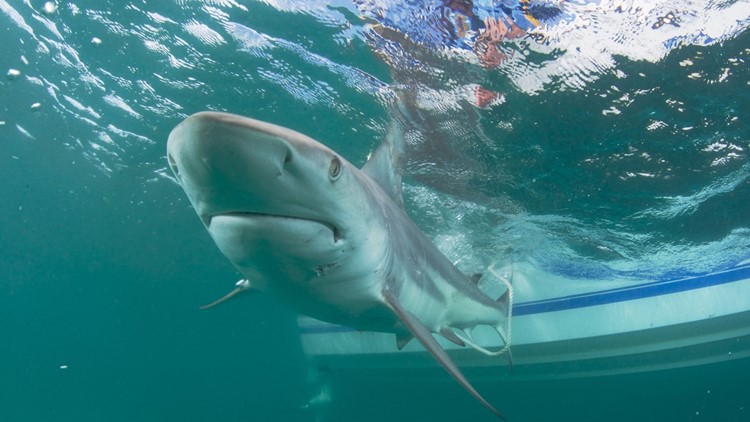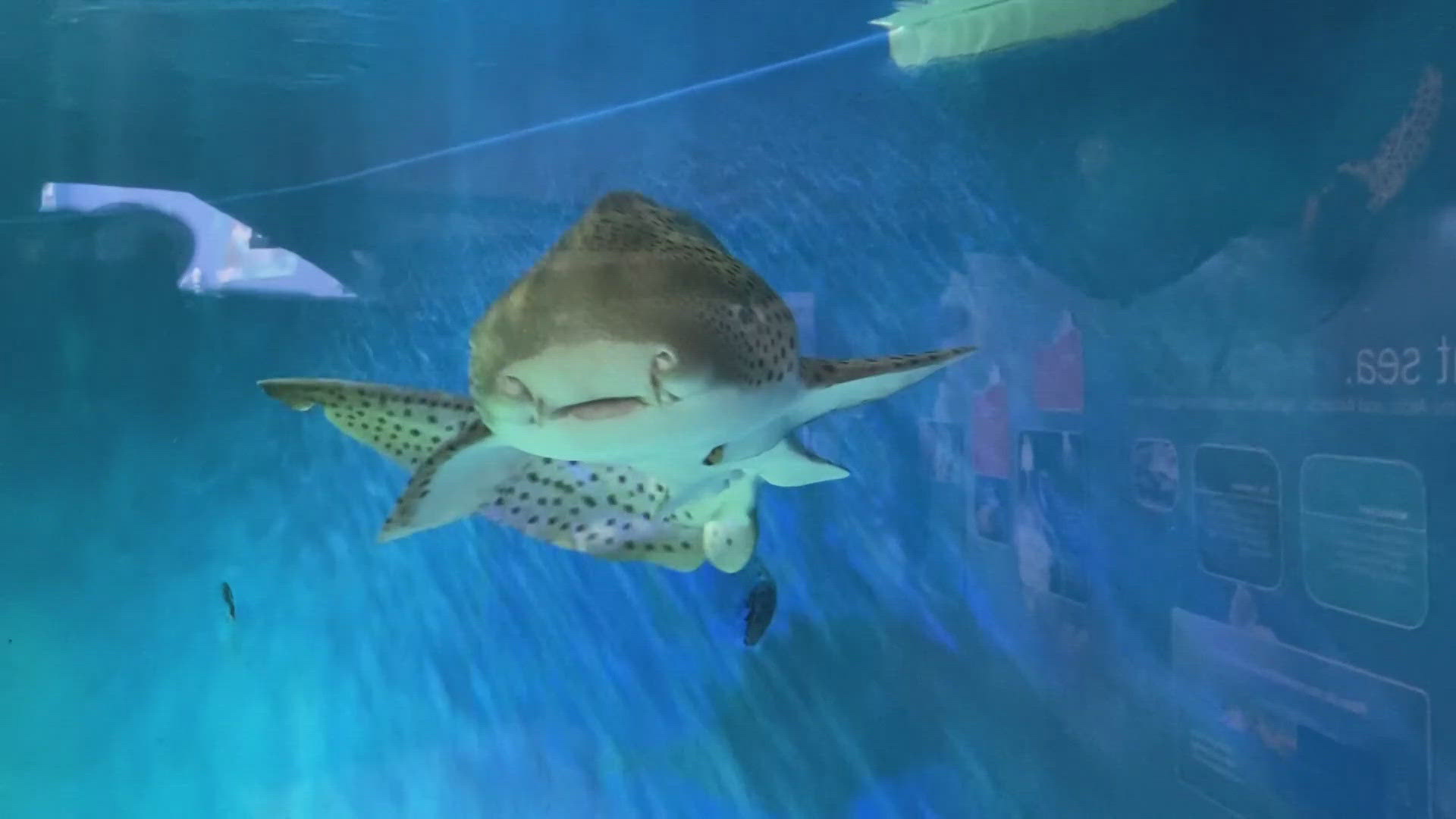If swimmers only knew how closely they wade to the dark, toothy figures lurking nearby — what biologists spy from above — they might think twice.
In the largest migration in United States coastal waters, blacktip sharks are headed south in the thousands for their yearly migration off Florida’s southeast coast.
But that migration to South Florida has shrunken drastically in recent years, according to research by Florida Atlantic University. Warmer coastal waters have resulted in more sharks lingering in Central Florida, North Florida and as far north as the Carolinas, they say, where cloudier waters near inlets that supply schools of bait fish put more people in the water near more sharks, and at greater risk of getting bitten.
"Those are like the shark bite capitals in the state," Stephen Kajiura, a biology professor at Florida Atlantic University, said Thursday of east Central Florida, where he suspects more sharks are staying during cooler months.
"As a result, you have more incidental bites on the people," he said of the consequences of more sharks staying farther north in Florida.
In the much clearer coastal waters off South Florida, sharks rarely mistake humans with their common prey.
For the past eight years, Kajiura has observed and tracked these “snowbirds of the sea.” He uses a boat, a plane, acoustic monitoring devices, and now drones, to report their movements in real-time.
When Kajiura began his shark surveys in 2011, he would count 12,000 blacktip sharks in South Florida during their winter migrations. "Now we're looking in the range of a few thousands at the most," he said.
Last year, the FAU researchers saw a dramatic decline in the number of blacktip sharks that migrated south. They estimated the population to be about one-third of what they'd seen in previous years. Some years, they've reported as many as 15,000 sharks on any given day. Chances are that people in the water will be within a 60-foot radius of one of these sharks, at any given time during their migration, the researchers said.
“We want to make sure that these snowbirds come back to South Florida, because if they don’t, it will have a huge ecological impact in this region,” Kajiura said in a press release Thursday about his research.
Tracking their migration isn't just about public safety, the researchers add, but also an important indicator of ocean health. Blacktips sweep through coastal waters and “spring clean” as they weed out weak and sick fish, which helps preserve coral reefs and seagrasses. The sharks migrate south during winter and head back north when it starts to warm up.
August and September bring massive schools of mullet, anchovies, herrings and sardines migrating along Brevard County and other Central Florida beaches. Blacktip, blacknose, spinners and sandbar sharks follow by the hundreds to pick off their meals.
Water temperatures determine where these blacktip sharks wind up. They head south when water temperatures drop below 71 degrees Fahrenheit, in past years reaching as far south as southern Broward County or northern Dade County, the FAU researchers say.
But unusually warm coastal water temperatures in recent years have cut that trip south far short.
"They're just simply stopping when they reach their optimum water temperature," Kajiura said. "That might have ramifications throughout the ecosystem ... You might have an abundance of sick or diseased fish here that are not being cleaned out."
When that happens, certain species sharks usually keep in check can dominate at the expense of others, creating ill effects that cascade throughout coral reefs and elsewhere in the ecosystem.
Kajiura studies the link between water temperatures and shark migration patterns to predict where they'll go. He uses small transmitters and web-accessible monitoring devices to receive the data in real-time via email. Kajiura also uses a fixed-wing aircraft with a camera to take photos and video of the sharks from about 500 feet above the water. Back at the lab, they manually count the sharks from the images.
“My research assistant has personally counted more than 100,000 sharks on the computer screen, which actually look like little black dots,” Kajiura said.
But he says South Florida fisherman have been having to go all the way to Central Florida or farther north to target blacktips the past few years.
Kajiura stops short of attributing warmer coastal waters in recent years to global warming, but says it might provide a glimpse of what's to come for shark migrations in a warmer world.
The recently warmer weather also means there's more of us in the water in the cloudier Central Florida coastal waters for sharks to mistake as prey.
Since 1882, Brevard has had 144 confirmed shark attacks, with one fatality in 1934, a young boy in the Melbourne Beach area. Only Volusia has had more shark attacks in that 136-year period — 299 attacks, none fatal.
While the overall risk of being bitten by a shark is extremely low, the highest rate of shark bites in Florida is in Volusia, Brevard and Indian River counties.
In 2012, a University of West Florida statistics researcher calculated that between 1994 and 2009, on average, the risk of being bitten by a shark was more than nine times greater in Brevard, Volusia and Indian River counties than elsewhere along Florida's east coast.
UWF analyzed the shark bites with software typically used to identify geographic cancer clusters and other disease hot spots, speculating that murkier waters and the Indian River Lagoon providing more fish to the area may contribute to the higher risk.
Some local surfers have in recent years blamed fishermen for chumming waters near shore for increasing the risk.



